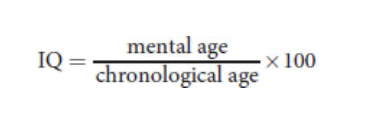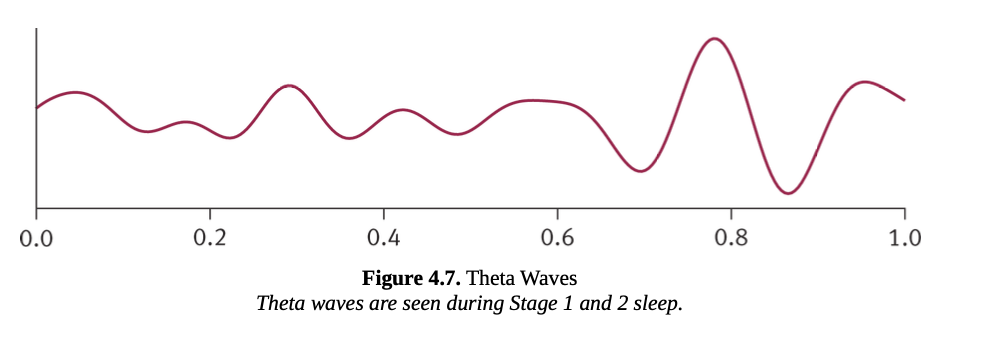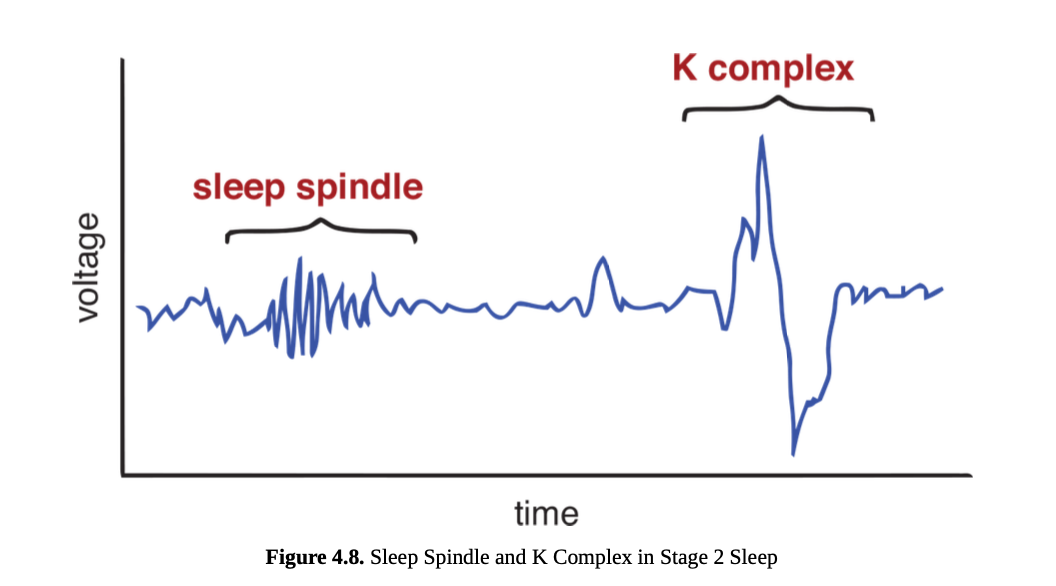PSY 1.4 Cognition, consciousness and language
1/84
There's no tags or description
Looks like no tags are added yet.
Name | Mastery | Learn | Test | Matching | Spaced |
|---|
No study sessions yet.
85 Terms
thought
is more than just that of which we are conscious. The brain processes and makes decisions about the importance of various stimuli below the level of conscious awareness.
information processing model
states that the brain encodes, stores, and retrieves information much like a computer.
Thinking requires sensation, encoding, and storage of stimuli.
Stimuli must be analyzed by the brain (rather than responded to automatically) to be useful in decision making.
Decisions made in one situation can be extrapolated and adjusted to help solve new problems (also called situational modification).
Problem solving is dependent not only on the person’s cognitive level, but also on the context and complexity of the problem.
dual coding theory
states that both verbal association and visual images are used to process and store more information
cognitive development
The ability to think abstractly develops over the life span. Early cognitive development is limited by brain maturation. Culture, genes, and environment also influence cognitive development.
Piaget’s stages of cognitive development
sensorimotor
preoperational
concrete operational
formal operational
schema
can include a concept (eg what is a dog?),
a behaviour (what do you do when someone asks you your name?)
or a sequence of events (what do you normally do in a sit-down restaurant?)
adaptation
comes about by 2 complementary processes
assimilation (classifying new information into existing schemata)
accommodation (process by which existing schemata are modified to encompass this new information)
sensorimotor
0-2 years
focuses on manipulating the environment to meet physical needs through circular reactions (for repetitive behaviour). Object permanence ends this stage.
object permanence
the understanding that object continue to exist even when out of view
preoperational
2-7 years
focuses on symbolic thinking, egocentrism, and centration.
egocentrism
refers to the inability to imagine what another person may think or feel
centration
which is the tendency to focus on only one aspect of phenomenon
concrete operational
7-11 years
focuses on understanding the feelings of others and manipulating physical (concrete) objects.
formal operational
12 and beyond
focuses on abstract thought and problem solving.
hypothetical thinking
A mild level of cognitive decline while aging is normal; significant changes in cognition may signify an underlying disorder.
Biological factors that affect cognition include organic brain disorders, genetic and chromosomal conditions, metabolic derangements, and drug use
fluid intelligence
consists of solving new or novel problems, possibly using creative methods. Figuring out how to navigate through a new video game world involves the usage of fluid intelligence.
peaks in early childhood and declines with age
crystallised intelligence
is more related to solving problems using acquired knowledge, and often can be procedural.
peaks in middle adulthood and remains stable with age
delirium
rapid fluctuation in cognitive function that is reversible and caused by medical (nonpsychological) causes
Problem solving
requires identification and understanding of the problem, generation of potential solutions, testing of potential solutions, and evaluation of results.
mental set
is a pattern of approach for a given problem. An inappropriate mental set may negatively impact problem solving.
Functional fixedness
is the tendency to use objects only in the way they are normally utilized, which may create barriers to problem solving.
Types of problem solving
include trial-and-error, algorithms, deductive reasoning (deriving conclusions from general rules), and inductive reasoning (deriving generalizations from evidence).
algorithm
a formula or procedure for solving a certain type of problem.
deductive reasoning
(top down)
starts from a set of general rules and draws conclusions from the information given
inductive reasoning
(bottom up)
create a theory via generalisation
Heuristics, biases, intuition, and emotions may assist decision making but may also lead to erroneous or problematic decisions.
heuristics
are shortcuts or rules of thumb used to make decisions.
availability heuristic
used when we base the likelihood of an event on how easily examples of that event come to mind.
representative heuristic
involves categorizing items on the basis of whether they fit the prototypical, stereotypical, or representative image of the category
base rate fallacy
Using prototypical or stereotypical factors while ignoring actual numerical information
biases
exist when an experimenter or decision maker is unable to objectively evaluate information.
disconfirmation principle
the evidence obtained from testing demonstrated that the solution does not work
confirmation bias
the tendency to focus on information that fits an individual’s beliefs, while rejecting information that goes against them
hindsight bias
which is the tendency for people to overestimate their ability to predict the outcome of events that already happened
intuition
is a “gut feeling” regarding a particular decision. However, intuition can often be attributed to experience with similar situations.
emotion
subjective experience of a person in a certain situation
multiple intelligences
Gardner’s theory
proposes at least eight areas of intelligence including: linguistic, logical–mathematical, musical, visual–spatial, bodily–kinesthetic, interpersonal, intrapersonal, and naturalist.
interpersonal intelligence
the ability to detect and navigate the moods and motivations of others
theory of emotional intelligence
addresses our emotional awareness in four components:
the ability to express and perceive emotions in ourself and others
the ability to comprehend and analyze our emotions
the ability to regulate our emotions
awareness of how emotions shape our thoughts and decisions
Empathy is often given as an example of
emotional intelligence because empathy requires individuals to understand their own emotions well enough to recognize those emotions in other people.
g factor
a single underlying factor, often referred to as general intelligence, can account for the positive correlations among cognitive abilities

Variations in intellectual ability can be attributed to combinations of environment, education, and genetics.
States of consciousness
include alertness, sleep, dreaming, and altered states of consciousness.
Alertness
is the state of being awake and able to think, perceive, process, and express information.
Beta and alpha waves predominate on electroencephalography (EEG).
RAS
a neural structure located in the brainstem, to keep the cortex awake and alert. A brain injury that results in disruption of these connections results in coma.
Sleep is important for health of the brain and body.
beta waves
have a high frequency and occur when the person is alert or attending to a mental task that requires concentration. Beta waves occur when neurons are randomly firing
alpha waves
occur when we are awake but relaxing with our eyes closed, and are somewhat slower than beta waves. Alpha waves are also more synchronized than beta waves

Stage 1
is light sleep and is dominated by theta waves on EEG.
characterized by irregular waveforms with slower frequencies and higher voltages.

stage 2
is slightly deeper and includes theta waves, sleep spindles, and K complexes.

stage 3 and 4
are deep (slow-wave) sleep (SWS). Delta waves predominate on EEG. Most sleep-wake disorders occur during Stage 3 and 4 non-rapid eye movement (NREM) sleep. Dreaming in SWS focuses on consolidating declarative memories.
Rapid eye movement (REM)
the mind appears close to awake on EEG, but the person is asleep. Eye movements and body paralysis occur in this stage. Dreaming in REM focuses on consolidating procedural memories.
sleep cycle
approximately 90 minutes for adults; the normal cycle is
Stage 1–2–3–4–3–2–REM or just 1–2–3–4–REM, although REM becomes more frequent toward the morning.
Changes in light in the evening trigger release of melatonin by the pineal gland, resulting in sleepiness. Cortisol levels increase in the early morning and help promote wakefulness. Circadian rhythms normally trend around a 24-hour day.
dreaming
occurs during REM, but some dreaming occurs during other sleep stages. There are many different models that attempt to account for the content and purpose of dreaming.
Sleep-wake disorders
include dyssomnias disorders that make it difficult to sleep (insomnia, narcolepsy, sleep apnea, and sleep deprivation)
parasomnias are abnormal movements or behaviours during sleep such as night terrors and sleepwalking (somnambulism).
narcolepsy
a condition characterized by lack of voluntary control over the onset of sleep
cataplexy
a loss of muscle control and sudden intrusion of REM sleep
during waking hours, usually caused by an emotional trigger
hypnosis
is a state of consciousness in which individuals appear to be in control of their normal faculties but are in a highly suggestible state. Hypnosis is often used for pain control, psychological therapy, memory enhancement, weight loss, and smoking cessation.
meditation
involves a quieting of the mind and is often used for relief of anxiety. It has also played a role in many of the world’s religions.
Consciousness-altering drugs
are grouped by effect into
depressants
stimulants
opiates
hallucinogens
depressants
result in the sense of relaxation and reduced anxiety
include alcohol, sedatives (eg barbiturates, and benzodiazepines). They promote or mimic GABA activity in the brain (a chloride channel that causes hyperpolarization of the membrane,).
disinhibition
which occurs because the centers of the brain that prevent inappropriate behavior are also depressed
Wernicke–Korsakoff syndrome
caused by a deficiency of thiamine (vitamin B1) and characterized by severe memory impairment with changes in mental status and loss of motor skills
stimulants
include amphetamines, cocaine, and ecstasy. They increase dopamine, norepinephrine, and serotonin concentration at the synaptic cleft
opiates
include heroin, morphine, opium, and prescription pain medications such as oxycodone and hydrocodone. They can cause death by respiratory depression.
hallucinogens
include lysergic acid diethylamide (LSD), peyote, mescaline,ketamine, and psilocybin-containing mushrooms.
marijuana
has depressant, stimulant, and hallucinogenic effects. Its active ingredient is tetrahydrocannabinol.
Drug addiction is mediated by the mesolimbic pathway, which includes the nucleus accumbens, medial forebrain bundle, and ventral tegmental area.
Dopamine is the main neurotransmitter in this pathway.

Selective attention
allows one to pay attention to a particular stimulus while determining if additional stimuli in the background require attention.
Divided attention
uses automatic processing to pay attention to multiple activities at one time
Language
consists of phonology, morphology, semantics, syntax, and pragmatics.
Phonology
refers to the actual sound of speech.
Morphology
refers to the building blocks of words, such as rules for pluralization (–s in English), past tense (–ed ), and so forth.
Semantics
refers to the meaning of words
Syntax
refers to the rules dictating word order
Pragmatics
refers to the changes in language delivery depending on context
nativist (biological) theory
noam chomsky
explains language acquisition as being innate and controlled by the language acquisition device (LAD).
critical period for language acquisition between 2 and puberty
sensitive period
is a time when environmental input has maximal effect on the development of an ability.
learning (behaviorist) theory
BF Skinner
explains language acquisition as being controlled by operant conditioning and reinforcement by caregivers.
social interactionist theory
explains language acquisition as being caused by a motivation to communicate and interact with others.
Whorfian (linguistic relativity) hypothesis
states that the lens through which we view and interpret the world is created by language.
Speech areas in the brain are found in the dominant hemisphere, which is usually the left.
The motor function of speech is controlled by Broca’s area
Damage results in Broca’s aphasia, a nonfluent aphasia in which generating each word requires great effort.
Language comprehension is controlled by Wernicke’s area
Damage results in Wernicke’s aphasia, a fluent, nonsensical aphasia with lack of comprehension.
arcuate fasciculus
connects Wernicke’s area and Broca’s area. Damage results in conduction aphasia, marked by the inability to repeat words heard despite intact speech generation and comprehension.